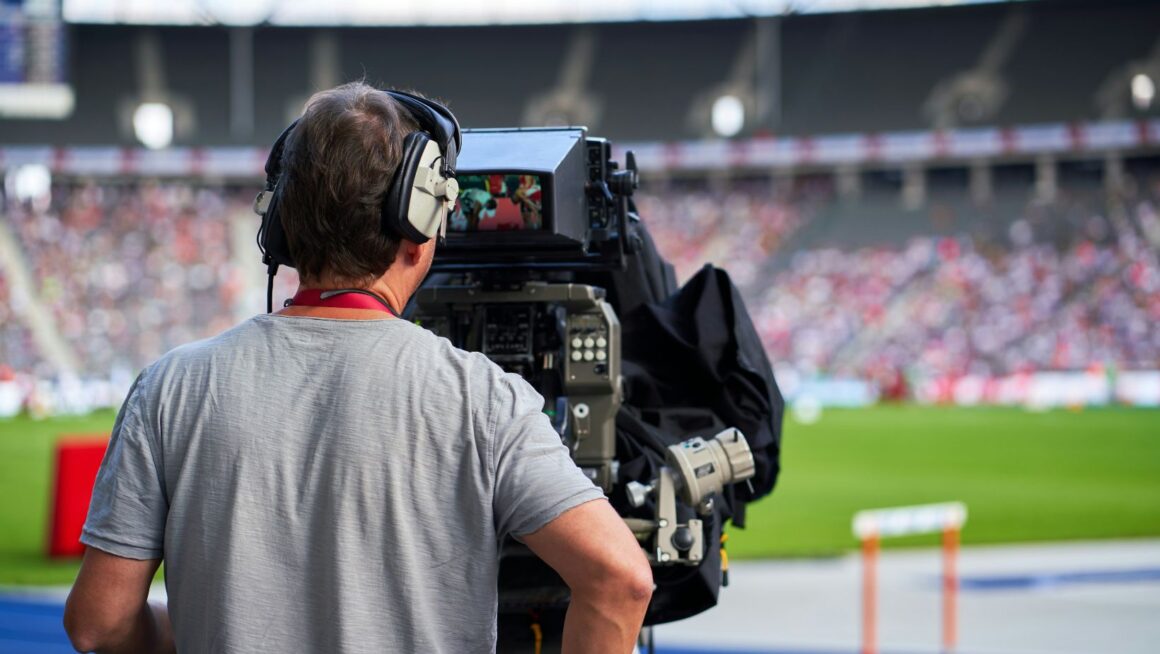Contemporary live broadcasting is a crossroad of directing, technology, and networking, with every detail at the disposal of the viewer’s emotional impression. The signal takes a couple of processes: filming, live directing, encoding, segmenting, and global delivery before it is seen on screen from the event’s location. Here, the article amalgamates operational and technical information to give a complete overview of how the sense of “presence” is being constructed in the air.
Production Process
Live sports broadcasts, like the 1xBet IE horse racing stream, start hours before the whistle is blown: the shot list, camera location, lead operators’ route, and assignment of tasks are all laid out in rehearsals beforehand. On the field, groups of engineers, directors, and camera persons are swamped coordinating action, sound, and graphics in real time.
The control staff are the live producer, broadcast director, and technical producer, who control the signal flow and make decisions about when to cut. The control room director looks at several video channels and orders the switching operator a fast, nearly choral motion. Cutting is “on the fly”: replaying is inserted if a spot has to be examined, graphics inserted, sound leveled, and it all has to look like a single, cohesive spectacle.
Camera & Audio Techniques
Camera choice and camera placement establish the visual dramaturgy of the broadcast. Small matches use 5–20 cameras; large tournaments and races use 40–50, including drones and robotic cameras. Different camera angles, from wide to POV cameras and super slow-motion, provide lively coverage.
The following is a list of typical equipment units and functions:
| Equipment | Purpose | Typical specs/notes |
| Super-Slow Motion Camera | Capture ultra-slow replays for key moments | 1000+ fps capability, dedicated replay server |
| Steadicam | Smooth handheld tracking shots | Operator-mounted, gimbal stabilization |
| Dolly/Track Camera | Controlled lateral movement for cinematic pans | Motorized dolly, repeatable moves |
| Robotic PTZ | Remote wide-angle or tight shots without an operator in the seat | Remote control, preset positions |
| Uplink Encoder | Prepare contribution feed to backbone | Hardware encoder, SRT/RTMP output |
| Commentary Mix Console | Live audio mixing for commentators | Multi-channel, talkback, ambient feed inputs |
Sound is another important component of immersion. Microphones capture not only commentary but also atmosphere: creaks, crashes, and crowd sounds. The sound engineer mixes the live arena sound and commentary, adding dramatic depth to flesh out the story. Unbalanced audio or delay will have the images looking “empty.”
Encoding & Delivery
Following the directing stage, some of the signal is sent to encoding: video from cameras is encoded with current codecs (H.264/AVC, H.265/HEVC, and the new AV1) to minimize data size and render it device-compatible.
Segmenting and transmission follow via adaptive delivery protocols such as HLS or MPEG-DASH; quality may adapt “on the fly” depending on viewer bandwidth.
To oppose latency, proprietary technology is utilized: WebRTC for almost-real-time distribution and Low-Latency HLS for minimum delay with maximum scalability. WebRTC supports near-minimum delay on browsers, and LL-HLS offers low latency in existing HLS infrastructure.
Lastly, a CDN distributes the finished segments to geographically distributed edge servers so that the stream is offered to the viewers with the least distance as well as the least possibility of overwhelming central nodes.
Main phases of the live pipeline for simplicity:
- Mixing and capture locally (on-site switcher, cameras, microphones);
- Transmission to central encoder (SRT/RTMP/RTSP, uplink);
- Segmentation into adaptive streams and encoding;
- Distribution to viewers through CDN edge nodes;
- Adaptive bitrate and low-latency management for playback by players.
This sequence is an oversimplification; in reality, there may be more steps: cloud-based mix rooms, reserved channels, and multi-format encoding. Trends currently are towards increased resolutions (4K/8K), spatial sound, immersive formats, VR, and AR. More robust graphical overlays and player and ball tracking (to indicate paths, speeds, and zones) provide fans with analytical substance, while AR layers enable statistics to be superimposed on the pitch in the viewer’s app. These technologies already exist in top leagues and will continue to develop as network infrastructure and codec advancements advance.
Conclusion
Transmission and recording of a sports broadcast is a symbiotic process where technology and direction fuel each other: one produces the drama, the other brings it to the viewer swiftly and unchanged. Everything is carefully choreographed so that emotions “work in real time” for millions of world television audiences.



